|
A Swim across the Catalina Channel: A Portrait in Teamwork August 2005
By Marcia Cleveland The short story: On Tuesday August 3rd, we swam the Catalina Channel in 8 hours, 56 minutes, 10 seconds. David Blanke, (Austin, TX, age 45), Liz Fry, (Westport, CT, age 46), and Marcia Cleveland (Winnetka, IL, age 41), left the island of Catalina, off the coast of Los Angeles, CA, and swam to Palos Verdes, CA, just south of LA. We left from the island around 11:30pm on Monday and arrived on the very rough coast around 8:30am. This is the first time 3 solo swimmers have done this swim together, and thanks to lots of cooperation and patience from the swimmers, we swam almost swam stroke for stroke the whole way. We were accompanied by our faithful kayaker, Richard Clifford, and an armada of extremely capable supporters, additional kayakers, and boat crew, all committed to being a part of this selfless team. It was the culmination of lots of hard work from several different people and everyone was grateful that the swim worked out so well. Here’s the long story, if you’re interested. Say, in the dark, Here in the dark? Would you, could you, in the dark? I would not, could not, in the dark. Since the last time I did a marathon swim, I have had two children. Julia was born in 1998 and Sam arrived in 2000. As a result of these joyful arrivals, much has changed in my life since the mid-1990’s when I was able to put so much energy and focus into my swimming. But I’ve learned a lot, things like the above lyrics from Green Eggs and Hamby Dr. Seuss, which is one of Sam’s favorite books, and they completely applied to my thoughts upon approaching the Catalina Channel Swim. In 1994, I swam the English Channel in 9 hours, 44 minutes. In the surrounding years, I had done several other marathon swims, including Manhattan Island. After the English Channel, I began to wonder: “What next?” I did Manhattan a few more times, including establishing a women’s American record of 5 hours, 57 minutes in August 1996, and a couple of other long swims. During my time in England in 1994, I met Nora Toledano from Mexico. We became good friends and I crewed for her when she did a two-way solo English Channel swim the week after my one-way solo (that means to France and back to England without stopping – pretty amazing!) In 1995, she came to New York and we both did Manhattan that year. We started talking openly about “What next?” and thought Catalina Channel (from the island of Catalina, California to the Los Angeles coast) would be a good, challenging swim to do together. Since most of this swim is usually done in the dark, any other live bodies in the water were going to be welcomed by me. We fast-forward to August 2003, somewhere off the southern coast of England, near midnight. Aegean Blueis gently rocking in the waves after having been afloat for close to 20-hours. Our six-person relay team doing a two-way English Channel relay (the same thing Nora did by herself) is nearing completion and it is becoming obvious that yours truly is going to have to swim in to shore for the finish. I was still scared to swim in the dark, even though I’ve done it countless times by now. The internal conversation I was having went something like, “When you set the record around Manhattan, you voluntarily jumped into the East River at 2:20am. How many people dothat?” “Yea, but…” “Please shut up and swim…” Ok, without recounting any more internal whining, I did it, I hated it, we got our certificates, and it’s over. My goal of Catalina still loomed on the future. What on earth was I going to do? To optimize conditions in this swim, the start time is typically at midnight because there are usually calmer seas, less boat traffic, and probably less winds. The tide really isn’t a factor, like it is in the English Channel. Some subtle signs that Catalina was becoming part of my life started popping up. Not one but two of my “mommy suits” (the bathing suits I use when I swim with the kids) were manufactured by a company called “Catalina.” Next, I ran into Kris Rutford in September 2004 at a race in Chicago. Kris and I have been friends for years and I told him about my dream of doing Catalina next summer. He told me that David Blanke, another long-time mutual swimmer friend, was thinking about Catalina too so I gave David a call. David has several major swims to his credit, including a successful crossing of the English Channel. When we spoke, he was totally game for company in this swim and we agreed to swim together. A few days later, another friend, Liz Fry, wanted in too, agreeing to swim together. Liz is a remarkable athlete in many different sports, including a recent English Channel swim. Since David had already reserved the escort boat, he checked to make sure that having three swimmers in the water at the same time would be ok. The boat captain said yes, and we were set. To begin turning this dream into a reality, I realized better start to take my own advice, namely in the form ofDover Solo. In 1999,I published this book, describing the preparation and actual swim of my English Channel crossing. Anyone preparing for a long swim needs to put some serious yardage in the bank and in the Fall of 2004 my current yardage account wasn’t going to get me too far. A build-up plan was established. Most swimmers talk about their training in terms of yardage, either weekly or daily, and I am no different. In the Fall of 2004, I was swimming about 15-20,000 yards a week. (There are 1,760 yards in a mile.) During January and February, I increased this yardage to 20-25,000 yards a week. In March/April, my weekly yardage total was 25-30,000 yards a week. In the May/June phase, I swam 30-35,000 yards/week, and continued this schedule during the first three weeks of July. During the last week of July, I swam a little less, in order to rest. This stair-step plan made the yardage increases more feasible, both mentally and physically. I also did stretching and core exercises several times a week, plus a weight lifting program twice a week. On a weekly basis, from January until school let out in early June, I would make my heavy swim days Monday through Thursday but it depended on our family’s schedule (Mark’s travel for work and the kids’ activities.) When I could, after dropping Julia and Sam at school, I would swum 6000 to 7000 yards by myself at a health club two to three mornings a week, followed immediately by weight lifting. Then when I needed to, I swam more in the evenings at Northwestern University with our masters’ team, NASA. When school let out, my time wasn’t my own anymore so much of my swimming was done before the kids woke up, and on the weekend mornings. When Lake Michigan warmed up to over 55žF consistently in early June, I swam 3-4 mornings a week at Tower Beach in Winnetka for about an hour-and-a-half with my training partner, Blair Johnson. On Saturday mornings, I went to Ohio Street Beach in Chicago for longer, 2+ hour, swims. A few times a week, I swam in the pool with NASA in the evenings. Throughout this time, there was a garden-variety of lake conditions, ranging from completely flat and still to 5 foot rolling seas. We swam in any and all conditions; all of this was good practice. When I swam in California just before Catalina and my legs felt buoyed up by the salt water I realized that the recent training I had done in the fresh water of Lake Michigan had been harder than swimming in the salt water of Connecticut that I was used to; our family had moved to Illinois from Connecticut in 2003. I also started to think about the sensory deprivation of swimming in the dark. Over the summer, I became more and more comfortable with the idea and convinced myself to approach the swim calmly, regardless of the available light. Next, I needed to fix this shoulder and back problem that had been nagging me for a long, long time (I stopped counting in specific numbers once the kiddies arrived.) In steps Brian Cunningham, a Physical Therapist who is also a fellow swimmer. His custom program began with rehabilitation then graduated up to strength and stamina training, which included a specialized weight training program. He devised most of the exercises to be done at home and I followed this plan religiously week-in and week-out. He constantly mixed up the program, to work different muscle groups and alleviate boredom. My kids loved to roll around on the big exercise ball and to lift the weights lying around, “just like Mommy.” It also gave me hope in the fact that he was really thinking about HOW I would be swimming and for how long. At one point, he said, “So if you’re going to be in this horizontal position for at least 10 hours, you really need to make sure your hip flexors are strong.” It was a good revelation because, yes, his entire statement was correct, and yes, he was thinking about the entire situation, not just how long I was able to hold the Plank position today. (Note to Brian: Now I only strongly dislike doing dips and chin-ups.) I consider my shoulder and back problems under control, just as long as I continue to do my exercises. During all this training, my body and particularly my shoulders felt miraculously feeling fine. I tried to build in a day every week of no swimming. Was I tired? Yes, all the time, and especially more tired on some days than others, and I had no real time to rest. This training was a lot different on my 40/41-year old, mother-of-two body than on the 29/30-year old, happy-go-lucky machine that I was 11 years ago. (The latter refers to my English Channel training days when I was swimming 45,000 yards per week for almost a year.) Coupled with all this training was the fact that we did some major renovating on our house this year. I saw all the furniture lifting and rearranging as supplemental weight training! I also needed to ask around for advice from the community of marathon swimmers I knew who had previously done Catalina. Alison Streeter, Karen Burton Reeder, Nick Olmos-Lau, Kathleen Wilson, and Carol all provided full recaps of their stories and I was able to glean tidbits and guidance from each and every one of them. The general consensus was that this was a lovely swim and the phosphorescence in the water were beautiful at night. However, you absolutely must be in good shape for the distance, the weather and water temperature could change dramatically, and the finish is as rough as you’ll ever see anywhere in the world. From what I heard, I started to embrace the positives. When the swim was over and we were safely on the boat heading back to the dock in Long Beach, it was apparent to me that all this counsel proved true. Nora continued to be game for this swim for several years but then her son, Max Dilan, arrived in 2000, and she became more involved in the organization of marathon swimming in Mexico. She told me if she could not actually do the swim she would crew for me. Rearranging the heavens and the moons, Nora kept her word and showed up to crew. Fast-forward to 5:45am on Wednesday July 27, 2005. My mother, Carolyn, Julia, Sam, and me all wave good-bye to my husband, Mark Green, and we pull out of our driveway in suburban Chicago, Illinois, headed for California. He will join us on Friday August 5thafter the swim for a family vacation. At 10:30pm CST on Friday July 29th, we pulled into Carol Sing’s driveway in San Diego. Carol is one of the grand dames of open water swimming, having become to oldest women (and sometimes person) to complete many swims, including the both the English and Catalina Channels. I had known her for several years and it was extremely generous of her to have us stay with her during our time in San Diego. Nora also stayed with Carol, giving all of us time to catch up. Living in this comfortable, relaxed atmosphere allowed Carol to fill us in on some of the Catalina details that would be helpful for both Nora and me. Having my mom along was nice because of the time she was able to spend time with all of us, especially her grandchildren, and she understood of the needs of my swimming. Sunday July 31st, a day-and-and-half before the swim, we headed up to the LA area to stay with David’s family. His aunt and uncle have a home in Huntington Beach and since they were away, they generously allowed us to stay there: David and his wife, Leslie; Liz; our kayaker, Richard Clifford, from Larchmont, NY; David’s sister and her husband, Mary McSweeney and Jon Ketzler, from Madison, Wisconsin; Nora, my mom, my kids, and me. The usual pre-swim planning and strategizing ensued on Sunday evening and Monday. Nora and I went over where all the various equipment was packed in my bags so she could get to whatever she needed quickly when she was crewing for me. We went over the feeding plan too. Sixty minutes into the swim, and every 30 minutes thereafter, at Richard’s prompt, we would all stop, tread water and receive our feeding from the kayakers. My feeds would comprise of a water bottle filled with 8 ounces of water mixed with Maxim, plus one Hammergel. At the 3rd, 5th, 7th, 9th, etc. hour, I would get the same mixture but with one scoop of protein powder mixed into the Maxim. Motrin would be given upon my request. Each feeding would end with a quick gargle of mouthwash, giving relief to the effects of the saltwater in the mouth. Then after this one minute break, we would all resume swimming. Official Channel swimming rules dictate that you can’t touch the boat, kayak, or another swimmer to gain assistance or an advantage. For all three of us, Leslie and Nora would mix a few feed bottles at a time, a kayaker would paddle over to the boat to receive them. After we had used up all the feeds, the kayaker would deliver the bottles back to the boat and the process would be repeated. Leslie mentioned afterwards that it would have been very helpful if our names had been written on each bottle so when the “load” was delivered, she and Nora could sort it out more easily. Before we got to California, I had told Liz that I wanted to wear a suit that didn’t make me look like shark bait. At our meeting on Sunday, she presented David and me with florescent pink custom-made bathing suits and matching swim caps. Across the front was a line drawing of a shark chasing a swimmer. Across the backside, was written YIKES! She even had a set for Julia! Great stuff! Heck, with that huge boat, 2 kayaks, and a big guy in a pink bathing suit, all the smart fish stayed out of our way. What fish in their right mind would want to take a bite out of a big guy in a pink suit? On Monday, all swimmers and crew seriously rested. One of my major concerns was staying up all night, something I’m not particularly good at. My mom took Sam and Julia out in the afternoon so the house was fairly quiet. We left for the boat around 6pm on Monday evening and arrived at the Bottom Scratcher around 7pm. This fifty-foot boat has 27 berths (bunks) and is outfitted for overnight scuba diving outings. It calls Long Beach Harbor home port. The swimmers and crew quickly moved all the gear onto the boat and then we waited while the captain and boat crew showed up. Our swim crew was comprised of Leslie Blanke, David’s very-capable wife; Nora Toledano, my very-capable friend; and Tom Stanton, Liz’s friend from LA who proved himself to be incredibly capable even though this was his first swim. A swimmer’s crew is responsible for the swimmer’s equipment and food, preparing feedings for the swimmer in the water, watching the swimmer for any signs of fatigue or change from ‘normal’, and general moral support. It’s similar to taking care of an infant. Our kayakers/paddlers were Richard Clifford who remained on the water the entire swim, and Steve Dockstader and Kevin Eslinger, both of San Diego. The official observers were Carol Sing, David Clark, and Rich Henry, all of San Diego. The observers make sure that the official rules are adhered to, timing the entire swim, keeping an official log of the swim. Kevin, David Clark, Steve, and Tom rotated kayaking shifts every in 2 hour. We had an experienced, excellent crew and everyone proved themselves to be worthy of all-star status. Also on board were Mary and Jon, David’s sister and brother-in-law. They are physicians and monitored all of us, swimmers and crew alike. Jon also took some AMAZING photos of the event and gave us a nice slide show the evening after our swim. My mom was going to take Sam back to the house in Huntington for the evening and for the first time ever, Julia would be allowed to be on the boat. During the swim, Nora was going to be Julia’s “mamacita” and Carol would be her surrogate grandma. Julia was great during the entire trip and won over the hearts of the boat crew. Captain Greg Elliott is a bagpipe-playing, competent, stern, yet agreeable salty seaman. During his pre-swim speech, he told us up front that he was very concerned about our trio arrangement. He made it perfectly clear that if we were unable to stay together, he would make no hesitation of hauling one, two, or all three of us out of the water. The three first mates on board were also just as competent and pleasantly in-control as Greg. I felt like I was in very safe hands. Everyone around us: crew, boat captain, kayakers, innocent by-standers, etc., were VERY concerned about our ability to swim together, defined as swimming stroke for stroke. However, from the moment that David, Liz, and I agreed to do this as a group, I never had a doubt that we would stay together. The right personalities were involved here. The slowest swimmer would set the pace and this position might vary as the swim progressed. As it turned out, from nearly the get-go, I was the slowest swimmer by just a little, but David and Liz honored their word. I was very comfortable swimming with them even though they would probably have gone 10-15 minutes faster without me. We left the dock in Long Beach around 8:15pm as the sun was setting. (The moon had already set that evening at 6:16pm.) I immediately headed for a bunk in the back of the boat and was quickly followed by David, Liz, and Leslie. These bunks were more out in the air than the ones up front; I wanted to minimize the potential for seasickness. Although I never actually slept, I rested and just kept thinking about good things. I was really relaxed and ready to go when the boat arrived at Catalina. It was dark, really really dark. The outline of the island was barely visible and there was no moon. We were in the last phase of the moon ("waning crescent") and cloud cover had moved into the area blocking any starlight. The kayaks and the boat would have some lights for us to follow, but not enough for us to see much in the water around us. Usually you can see some sort of lights from the land but right now darkness prevailed. I simply didn’t worry. It was going to be whatever it was going to be. Nora applied Vaseline to the chafe points along my suit lines and neck, I put on my cap and goggles, wrapped a towel around me, and waited in the 60F cool night air. Channel rules stipulate that a swimmer may wear a bathing suit, one cap, goggles, and grease. When it was time to get into the dinghy from the boat, there was no hesitation. We motored about 200 yards over to the island and jumped into the 68F water. The start point for Catalina Channel swims is a small beach at Doctor’s Cove on the northeast side of the island. All of us were reaching the island for the first time. On the cliffs about this beach is a Boy Scout camp. In order to begin any open water swim, you must “clear the water,” that is, get to a starting point where there is no water behind you. (Subsequently, to finish, you must also “clear the water,” getting to where there is no water in front of you.) As we left the water and walked up onto the beach, we noticed about seven post-curfew scouts on the cliffs above, watching us swim in. They ran down to the beach and asked us where we were swimming to; “Long Beach,” I replied. They were in awe and gave us an enthusiastic send-off. 11:36pm Monday August 1, 2005: David Blanke, Liz Fry, and Marcia Cleveland enter the Catalina Channel and each begin their solo swim crossings. This swim started out calmly and smoothly. The water (68F) and air (low 60sF) temperatures felt fine and the wind was blowing from the west at 10 knots. As I mentally checked myself out from head to toe, everything was coming up in the “good” zone and I felt like butter. For the first mile we were in the lee of the island and had nice flat water. Then the open waters of the Pacific Ocean welcomed us whole-heartedly with 5-8 foot northwestern swells and western winds of 15 knots. Our crew told us that had any of us known just how difficult these swells were to swim in, we all would have gotten out. This is the time that I was really glad that I was swimming with others. If they could do it, so could I and I’m sure they were thinking the same thing. For the first two hours, it was all the three of us could do not to sandwich on top of one another. I kept reminding myself that I was swimming with really good people. When it was all over, we would be able to reminisce these first few hours but for right now, when things are a little crunched, hold on and relax. Patience, patience, patience: There must be a reason why he/she is doing that. Remain calm and you’ll find out later what’s happening to everyone else right now. We had arranged our order ahead of time: Richard would be on the outside in the kayak the whole time, David would swim next to him, I would swim in the middle, and Liz would swim on the right side. To her right would be the other kayak then the boat. The total distance from Richard to the boat was about 50 feet or less, so we were comfortably bundled. The swimmers and kayakers were organized to keep the lawyers amongst us, Richard and David, on the outside at the start because of the dreaded sharks that never appeared. Why? Because we had professional courtesy and they are not known to eat their own. As for the feeding procedure, David and I would feed from Richard’s kayak and Liz would feed from the other one. One of the other rules of open water swimming, along with “clearing the water”, is that the swimmer cannot touch anything to gain assistance. You can have things handed to you such as cups for feeds but you can’t touch the boat, kayak, or other swimmers unless it is accidental. Miraculously, we managed to adhere to this rule even in these bunched up, swelly seas. I volunteered to swim in the middle because I breathe bi-laterally (on both sides) and heck, with two young children, I’m used to having no personal space. As we were being “swelled” into one other, I envisioned a large Oreo cookie with David and Liz as the cookie part and me as the crème. Hey, if this is where my mind was now, I’m doing pretty well. If I needed something else to think about, I always knew I could think about the fact that we were swimming in 3000 feet of water, or that there were things with teeth around, or how DARK it was. As it turned out, I really didn’t worry about any of these things. (Liz, sorry I almost bumped you again and again.) Swimming in the Pacific at night in high seas with very little light gave me an appreciation for people in shipwrecks. Whenever I would lift my head up so that my eyes were at water level and look forward alligator-style, I could see only a black horizon line. Now, I like stomach-dropping roller coasters just as much as the next person. After about 2 hours of these seas, I felt as if I may get sick from Mother Nature’s roller coaster. I asked Richard to get some seasickness medicine to have on hand. As it turned out, I didn’t take it and I didn’t get sick but it was nice to know it was right there if I needed it. Leslie, Carol, and Nora thought I had taken it because in the darkness they couldn’t see our immediate actions and they were concerned that I was getting sick. If a swimmer gets sick in the water there is always the concern that they will become dehydrated and have to abort the swim. Fortunately, none of us were sick. Around 3AM, I was tired. Not tired from the swimming but tired from being up all night. My brain felt like it was rattling around in my scull and I hoped that I could stay awake. It really helped when the sun came up. Staying up all night is just one of those things that you do for this swim and really can’t do anything more than rest up in the few days before. There was no point in complaining about it either since we were all in the same “boat.” By this point, I had hunkered down to a sustainable pace that I knew I could continue all night and kept thinking, “rotate, rotate, rotate”, which make me concentrate on rolling my hips and moving more easily through the water. My stroke rate, number of arm pulls taken in a minute, held consistent at 64, (although down from 71 at the start.) Liz and David were also holding consistent SRs of 65 and 58, respectively. Richard was performing magnificently. Although he much prefers the role of “Sherpa” over “dean of discipline”, when we’re in the water, he is the BOSS and treats us like little children. Not abusive, just authoritative, telling us what to do. When it’s all over, everyone is again on equal footing. During this swim, he was managing to stay afloat, not take on water in his kayak, navigate in the dark, keep the other kayaker in line, feed David and me on regular 30 minute intervals, and stay pretty cheerful. Because he’s so in control, it puts me at ease and lets me do my job: just swim. At one feeding I said to him, “It’s soooo dark, Richard. Can you see anything?” He told me, “I can’t see anything, not even the lights on the coast.” In a moment of levity, I inquired, “Do you think they’re playing a cruel joke on us and leading us in a big circle back to the island?” Around 5 hours into the swim, my left shoulder started to hurt. Had I not done all the PT work with Brian, this pain would have most likely begun earlier and been worse. I asked Richard for 1 Motrin. Two hours later, the pain was worsening. At that feeding, Richard had 3 Motrins ready for me to take, barking, “Take these because the first one obviously isn’t doing the job.” (I took 2, and they worked.) Other swiftly delivered commands from the kayak included, “Marcia, keep you head down and stop looking around. Let me do the sighting. There’s nothing to see anyway. Don’t be a tourist.” (It was really foggy.) At one point, because Liz and her kayaker were working their way about 10 yards forward, Richard gave her a “time out.” He rearranged the swimmer order, had Liz swim right next to him, put David in the middle, and had me swim on the right, next to the other kayak. If Liz got ahead of Richard’s kayak, he barked at her to stay back. Before the swim, I was concerned about potential encounters with sea life in this Channel. While in the water, I barely thought of it at all. Liz did report to Richard at one point that she was being attacked by “thousands of flying fish.” This was after she reported a seal darting at her in pitch black then hitting a sleeping sailfish (?). David and I saw and felt nothing even though we were all in the same water, giving Richard license to tease Liz after the swim. Liz wondered later if her bright pink suit acted like a lure and attracted marine life to “come by and take a look.” The only encounter I had with any sort of sea life was a few stings from random jellyfish tentacles at arbitrary points in the swim. Yes, it hurt but by the time I would have stopped to complain about it, the sting would have subsided so I adhered to the “No complaining” rule. Around 6am, it finally became light; the official sunrise came at 6:25am. It seemed to go quickly from DARK to light and with this light came calmer water topped with fog, conditions we would have for the next two-and-a-half hours into the finish. One of the benefits about swimming for 6 hours in the dark was that when it was finally light, much of the work had been done. At 6:10am a super tanker crossed about 200 yards in front of our bow, creating major swells, then our boat crew saw dolphins! Liz said afterwards that she actually did see the dolphins (Richard pointed to them) and she tried to touch one that came within three feet in front of her. David and I didn’t see them, but apparently they got pretty close. Big exciting half hour for everyone! At 7am, with the booming sound of Captain Greg’s bag pipes resonating across the water for the next 45 minutes, I knew everything was going well and that we were going to make it as long as we avoided a disaster. We could see land, the temperature had dropped (to 63F) as it usually does in the final 3 miles, and all three swimmers were in good shape. Leslie and Nora even joined us in the water, making it a five-some! From the pictures taken at this time, we look like some military formation: three swimmers bracketed by 2 kayakers in one line and two swimmers (Leslie and Nora) comfortably trailing the outside swimmers. In a way, I was almost sad that this was almost over since I thought it would be a 10-12 hour swim but all three of us were cranking towards a strong finish. Mark called the boat then and the crew relayed, “Mark is very proud of you.” This added to my pure happiness at the moment and energized me. Nora woke Julia up and she appeared on deck bleary-eyed, barely responding to my chipper, “Good Morning, Julia.” The next thing I know she has disappeared only to re-appear in the launch (boat dinghy) that is speeding towards shore in preparation for our landing. She would witness our finish up close and be one of the first ones to greet us after the swim! The skies remained overcast but we could clearly see the shore now. Thanks to the Motrin Richard had insisted I take, my shoulder felt fine and I could comfortably keep up the increased pace offered by David and Liz. Everyone wanted to finish so when a feeding was presented at 8 ½ hours, I bluntly said, “NO.” David told me later that he was glad I made such a quick, firm decision because he didn’t want it either. We were in “Let’s Go!” mode. There is a lighthouse that overlooks Palos Verdes and on the next cliff just south of the lighthouse, there was a large screen; we would land in the small bay between these two points. The screen turned out to be part of the fort scene in the movie “Pirates of the Caribbean”and several movie workers cheered on our finish from overhead. When we were about a mile from shore, Kevin Eslinger got in the water on his paddleboard and it was evident that he was there to guide us to a safe landing. We headed straight towards the movie screen then made a sharp left into the bay. I wondered why we weren’t landing straight ahead and knew this answer could wait: right now, the unspoken deal was to follow Kevin. The water was getting shallower and rockier with every stroke. Ok, I’d heard about this finish, it didn’t look so bad. Then we hit the rocky beach. The three of us each crawled in on all fours because we instantly realized that the combination of the rapidly pounding surf against the nasty little sharp, slippery rocks right at the surf line made for a dangerous landing. When everyone was able, we stood up together and TA DA! Our swim was complete! It was 8:31am and we had just swum the Catalina Channel in 8 hours, 56 minutes, 10 seconds. I was joyful that everything worked out. This had been such an intimate team effort on the parts of everyone: swimmers, kayakers, and crew. It amazed a lot of people that we successfully completed this incredible swim in such a fast time and it produced a deep sense of satisfaction for everyone involved. Kevin told us to pick up a few rocks and put them in our suit if we wanted any because we weren’t coming back to this beach. Then we carefully negotiated a re-entry into the water (I dog-paddled) and swam to the waiting dinghy. I was really happy to see everyone, especially Julia. She was able to experience the raw emotion we were sharing and to see our bodies in their present condition. Except for my aching shoulder, I felt and looked fine. Liz and David were in a similar state. When we arrived back at Bottom Scratcher, everyone on board was ecstatic; they all had played a major role in our success. The boat headed back to the dock in Long Beach and dolphins jumped in the aft wake, giving us a real show. My brother, Bill, told me long ago that the reason dolphins always look like they’re smiling is, “If you could do the things dolphins can do in the water, you’d smile too.” On the boat Kevin told us about the reason for our sharp left turn at the finish. If we land under the movie screen it would have resulted in three immediate visits to a plastic surgeon. The rocks there were much sharper than the sharp, nasty, slippery ones we landed on. OUCH! Kevin also massaged my shoulder on the boat which enabled me to recuperate in just a few days. (THANK YOU KEVIN!) The day after the swim, we recovered and reminisced in LA at David’s family’s home. Sam nearly gave Gram heart failure by jumping off the dock “just like those big boys over there” (fortunately, he’s water-safe.) Leslie told me afterwards, “This was, by far, the most fun I’ve ever had on a boat. Maybe it helps that Mary and Jon had me completely fixed up motion sickness medicine, but I think it had a lot more to do with all the special people on board, all of whom also seemed to be having a pretty great time themselves.” “It's amazing that when you're on board in support of a swim, the time flies by and all you really think about is how incredibly special it is to be watching this kind of athletic effort in the water. Replenishing the bottles and preparing all your goody bags could not have been done without Tom, Nora, Mary, Jon and I all working in the same capacity.” Eventually we said our good-byes, knowing there would be a next time. Then we went back to Carol’s and relaxed some more. The extent of our San Diego adventures included taking a short afternoon trip on the Amtrak California (giving Sam eternal joy), visiting the San Diego Zoo, hanging out at La Jolla Cove, and lounging in Carol’s pool. Mark arrived on Friday night, ready for his full two-week vacation. Gram headed back to Connecticut on Saturday morning, and our family foursome headed off to the Grand Canyon on Sunday, following a brief 5-mile swim race in La Jolla Cove. When I shared my initial results with family and friends, many people told me how inspired they were by this feat. It makes me happy to know that this swim accomplished by a couple of 40-something-year-olds can help to prompt others to dream and then fulfill these dreams. Please continue to pass it along, with the hope that someone somewhere will set in motion the steps to achieve a dream. Simply to get moving may be enough of a goal. People ask me if I had a good time on Catalina Island. Based on the 30 seconds we spent there, it was very nice. Someday, I’d like to return to explore more. I can never say it enough: Thank you to everyone who helped with this swim, both near and far. Thank you to David and Liz, Leslie, Nora, Carol, Richard, Kevin, Steve, Tom, David, Rich, and the crew of Bottom Scratcher. Thanks especially to my mom who gave me the support I needed in California, and to Mark who has given me oh-so-much support for the past 15 years! I do so like green eggs and ham! Thank you! Thank you, Sam-I-am! And swimming in the dark is a darn great experience. Onwards and upwards to the next challenges! Swimcerely, Marcia Cleveland August 31, 2005
1 Comment
|
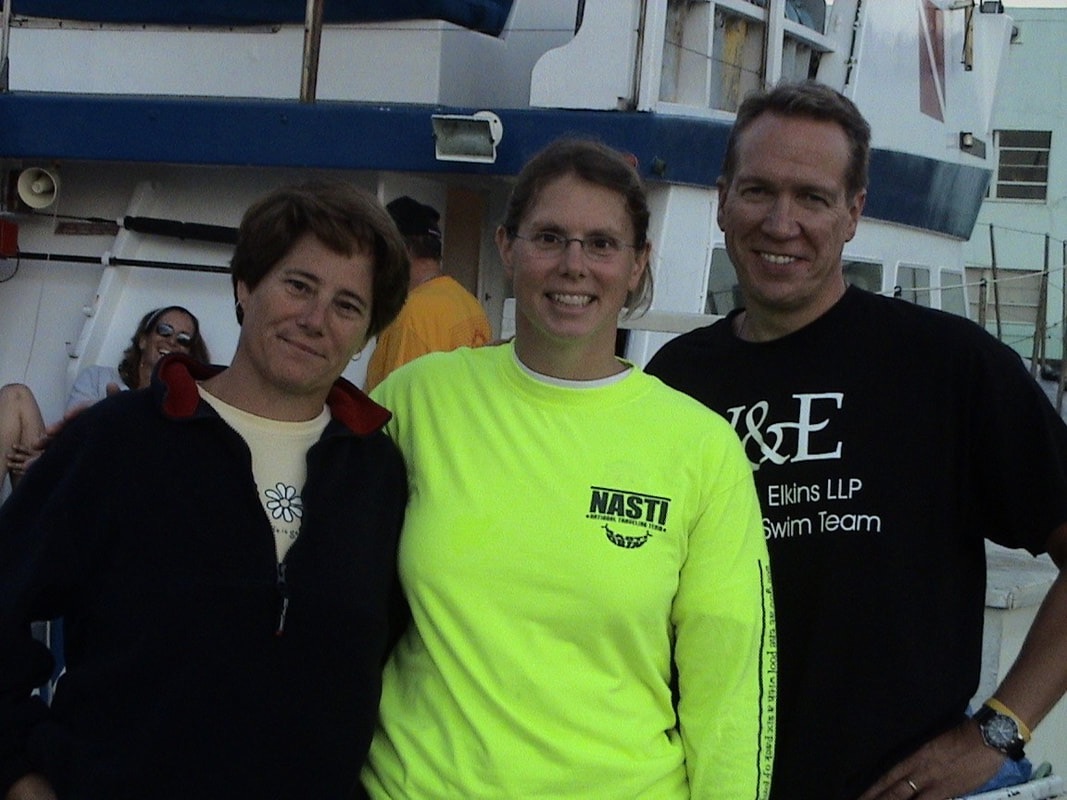
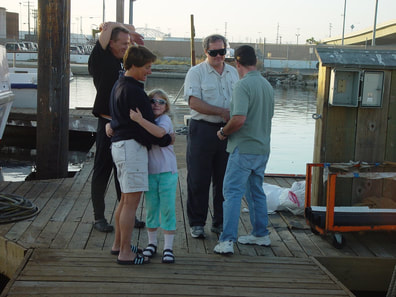
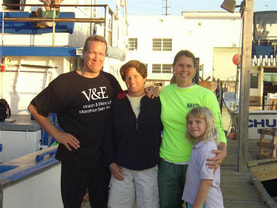
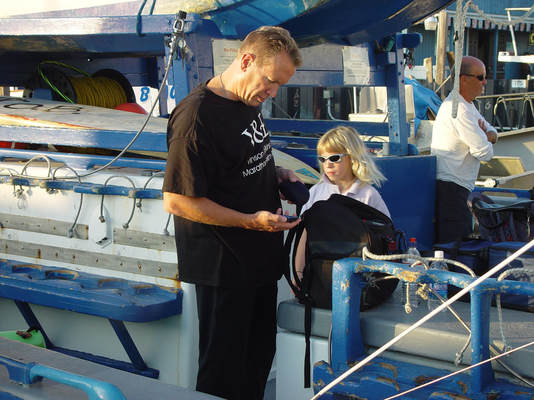
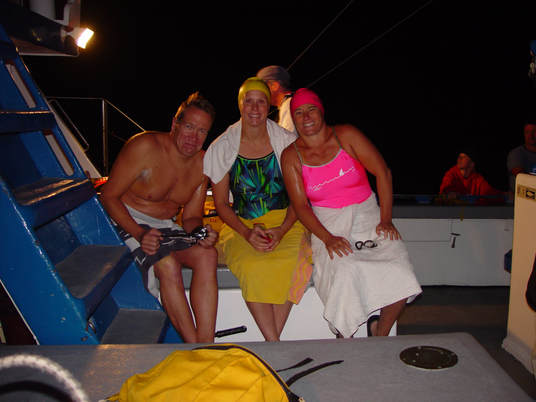
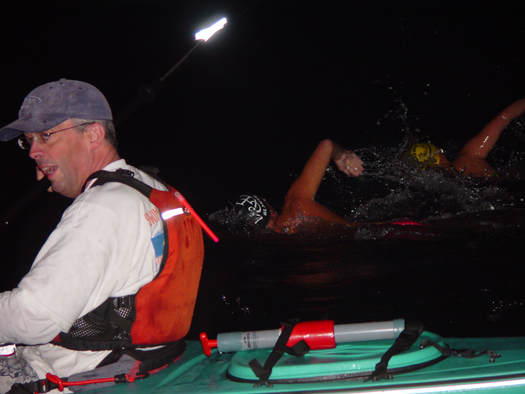
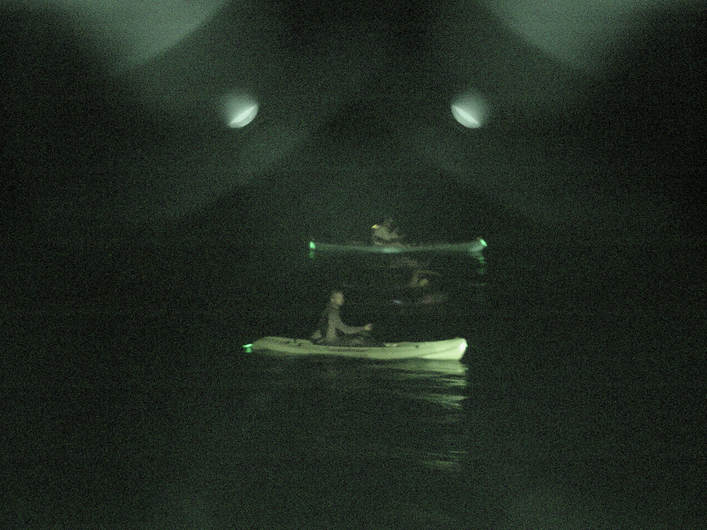
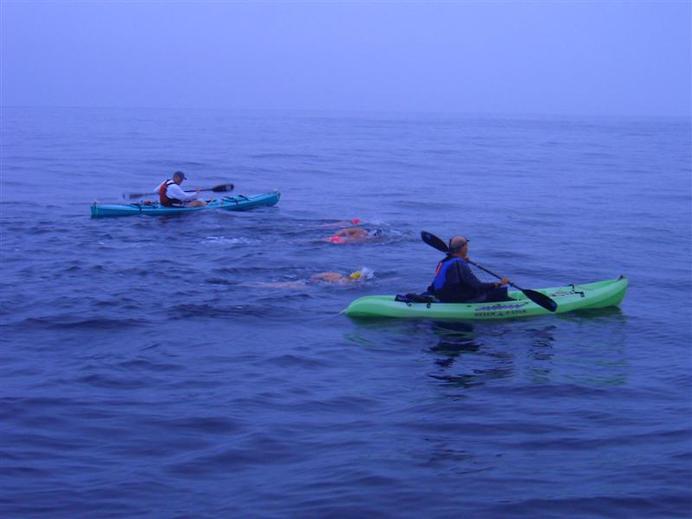
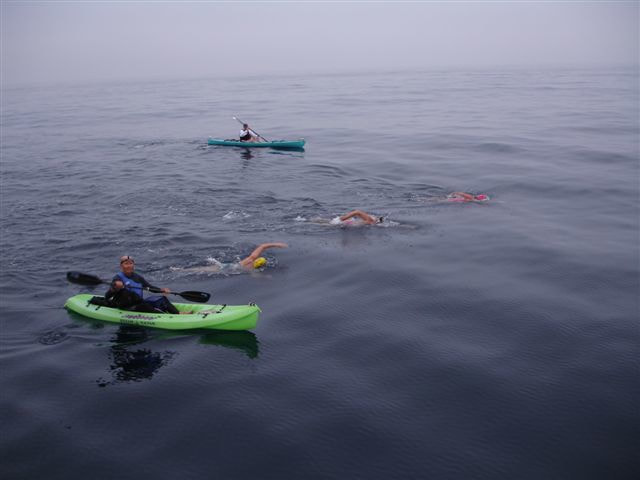
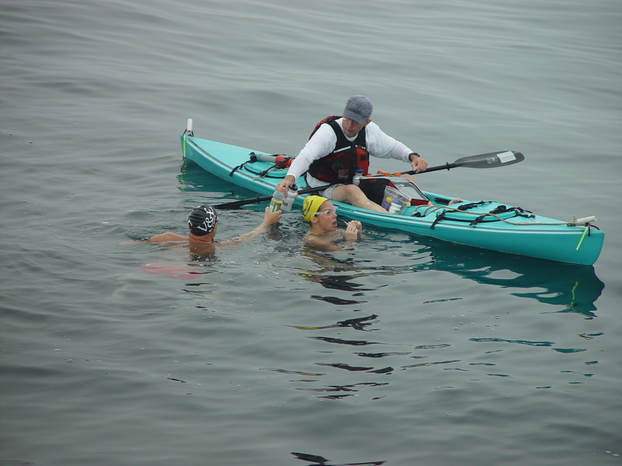

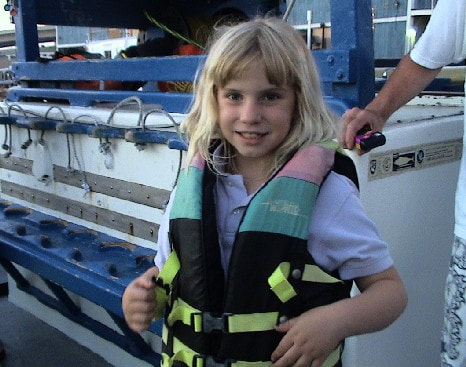
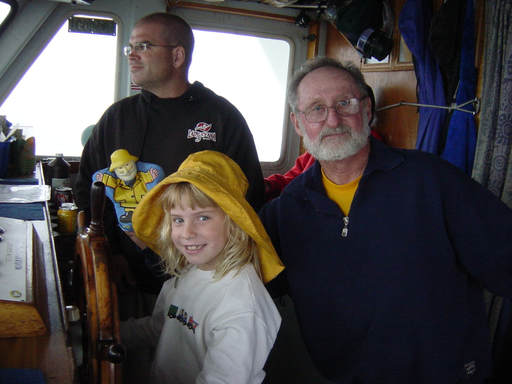
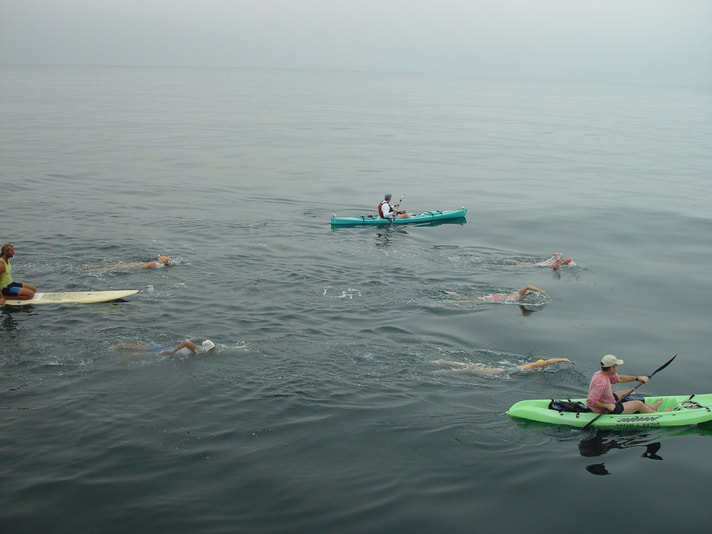
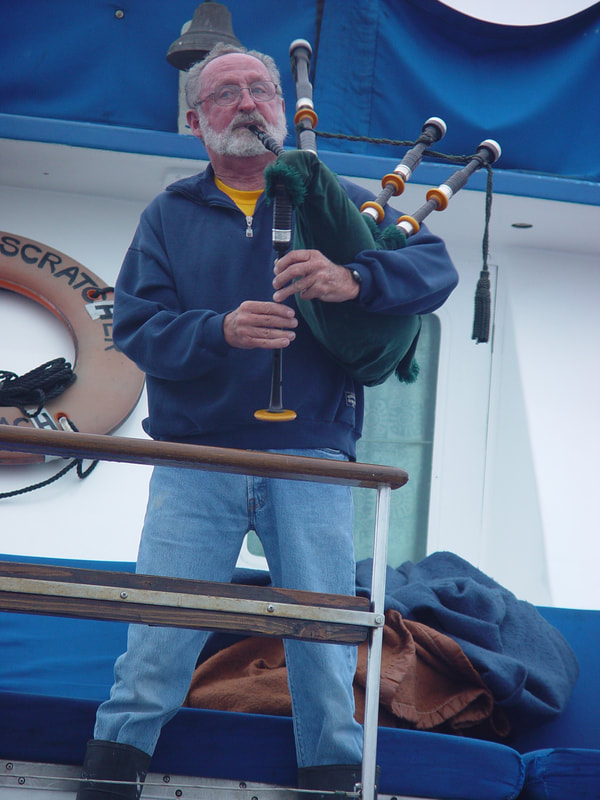
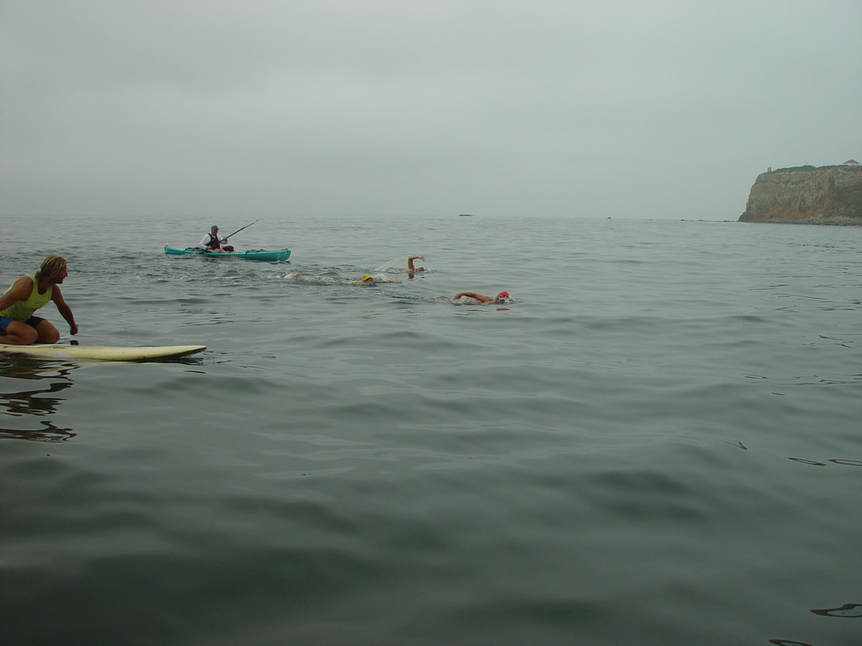
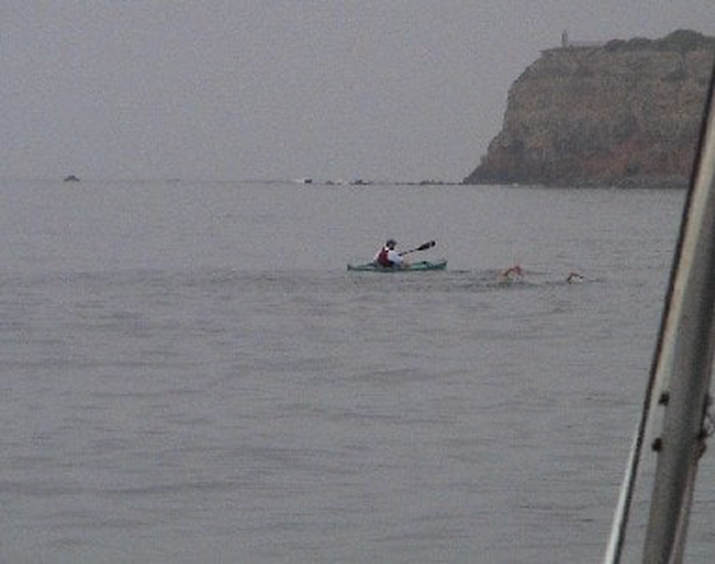
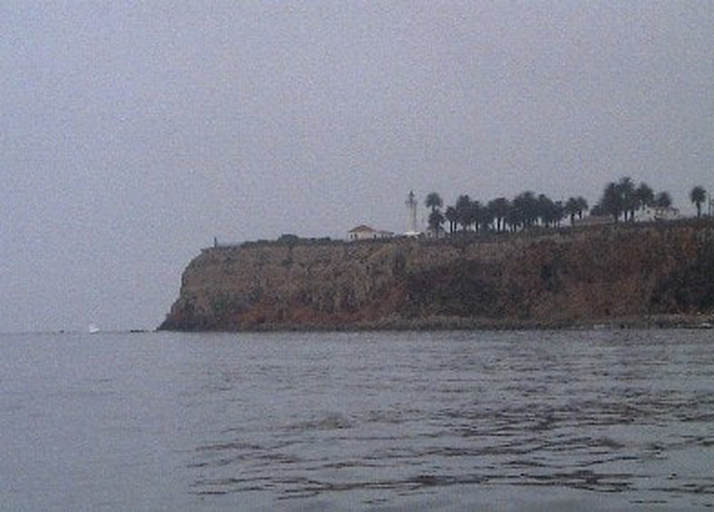
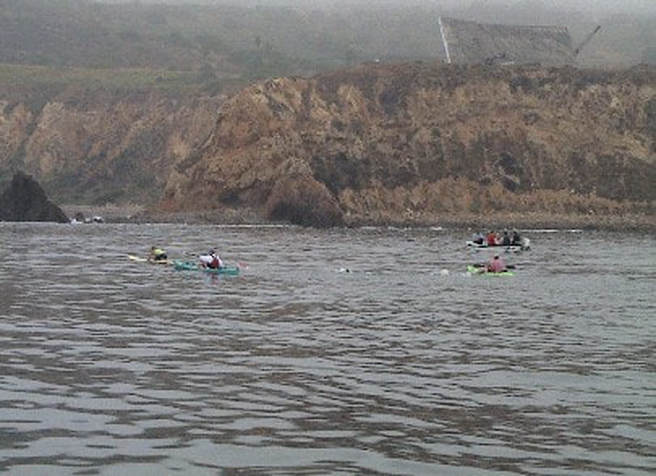
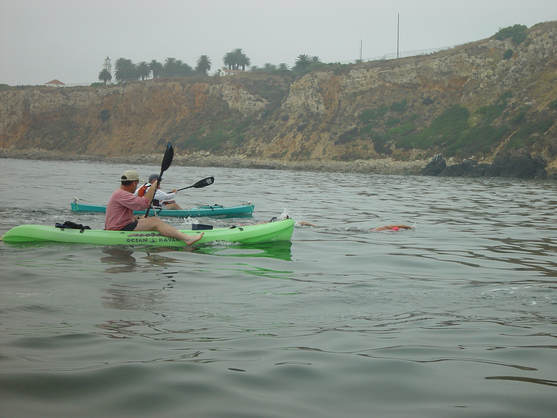
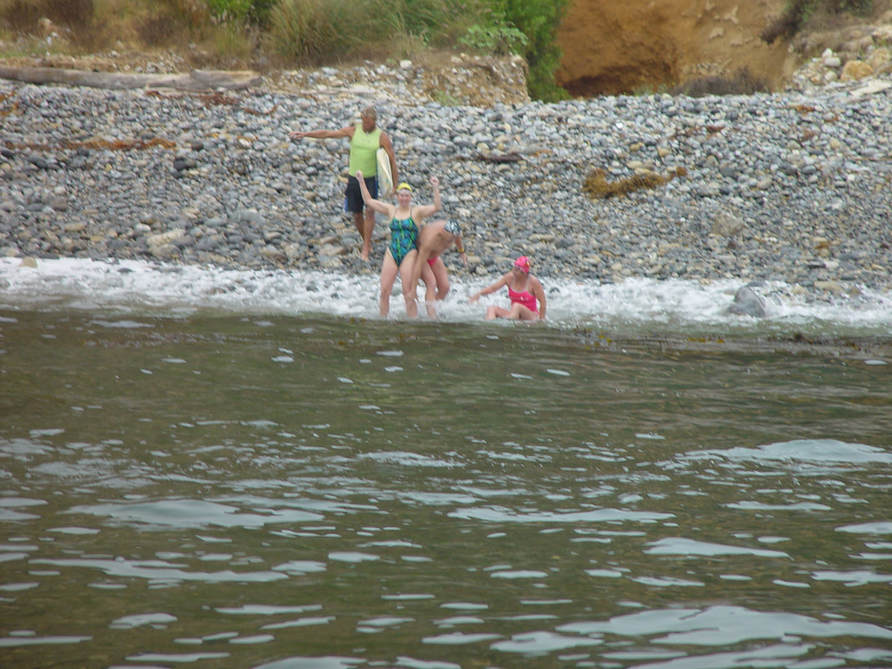
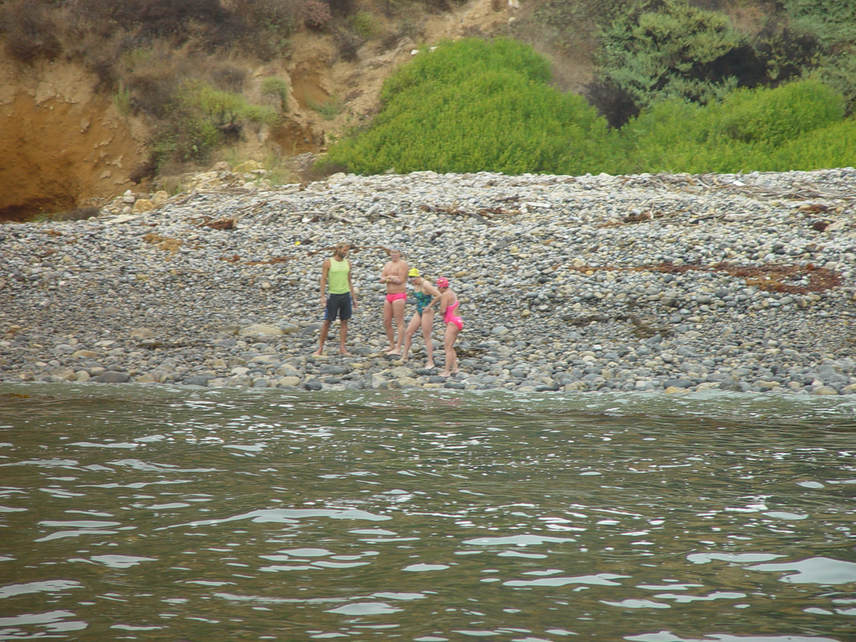
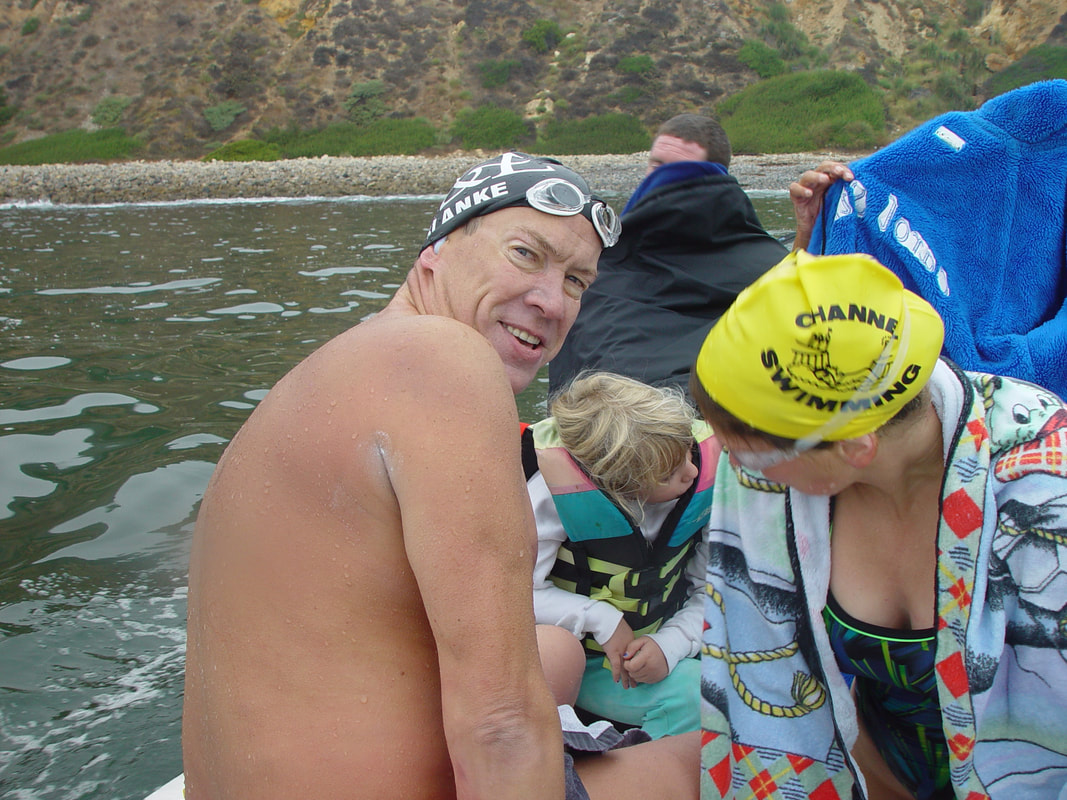
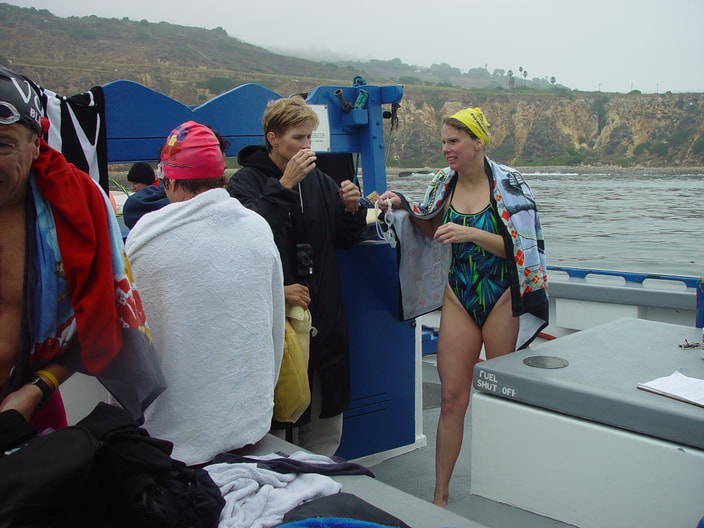
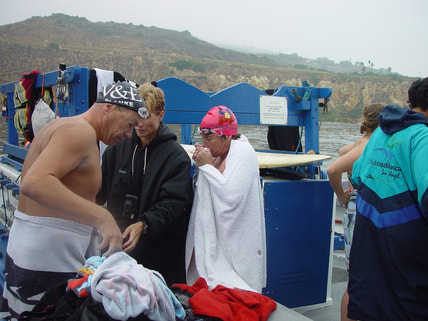
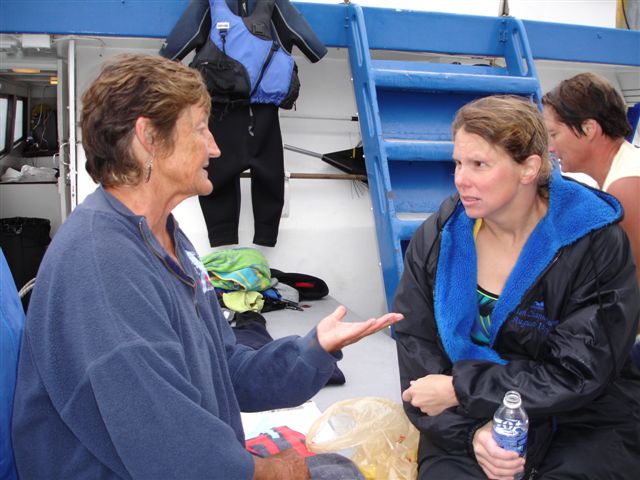

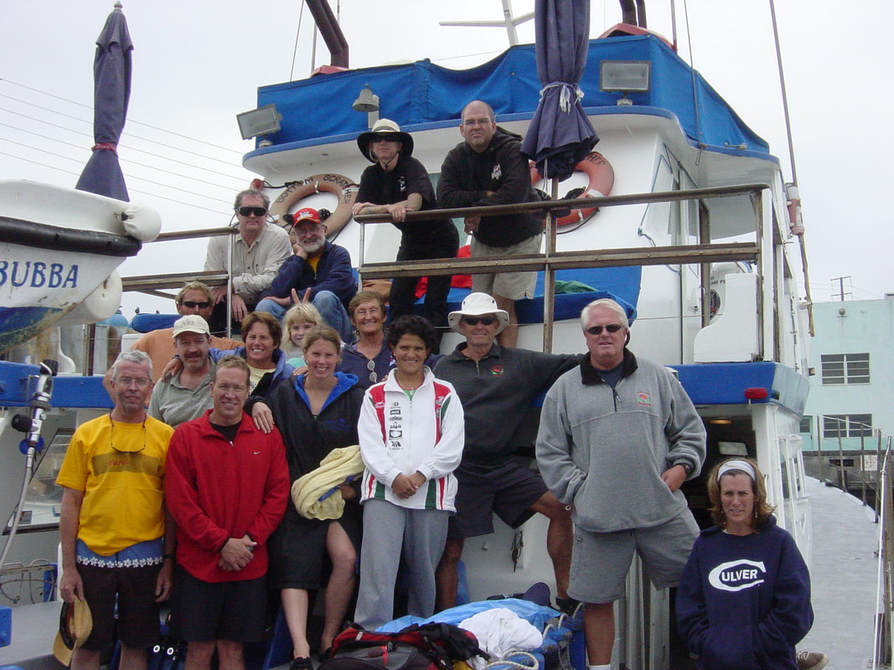
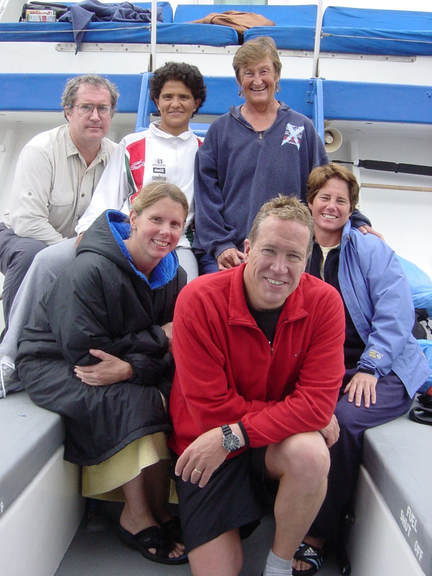
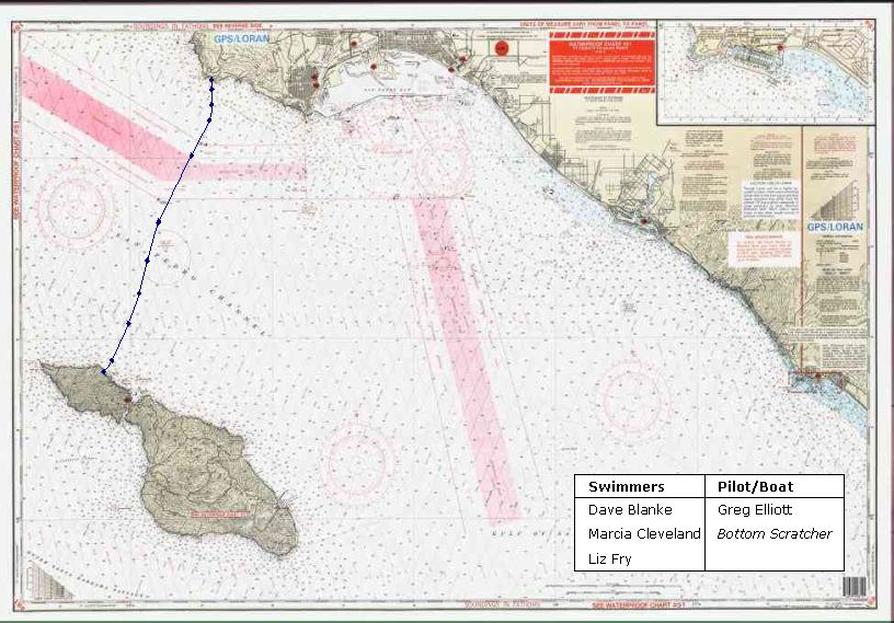
 RSS Feed
RSS Feed